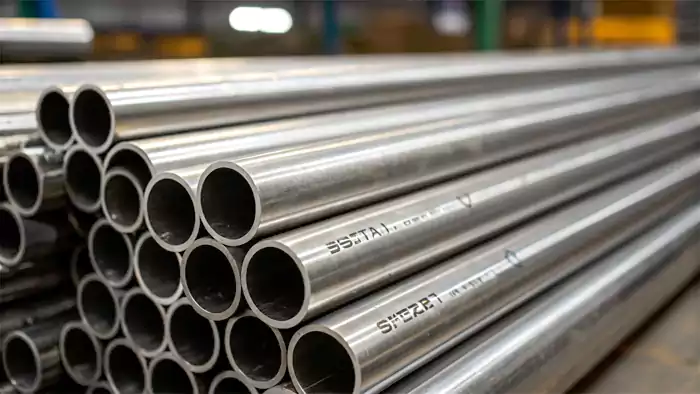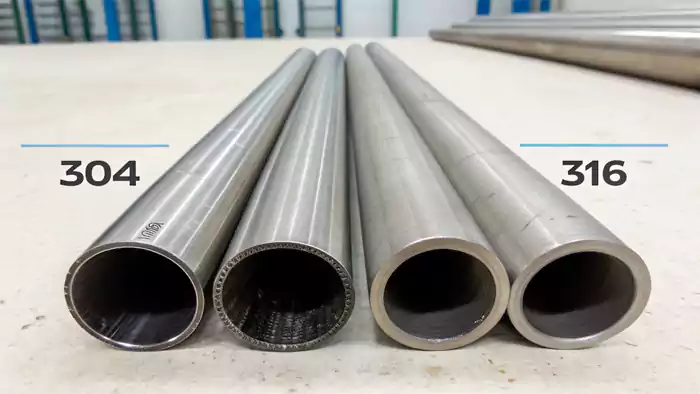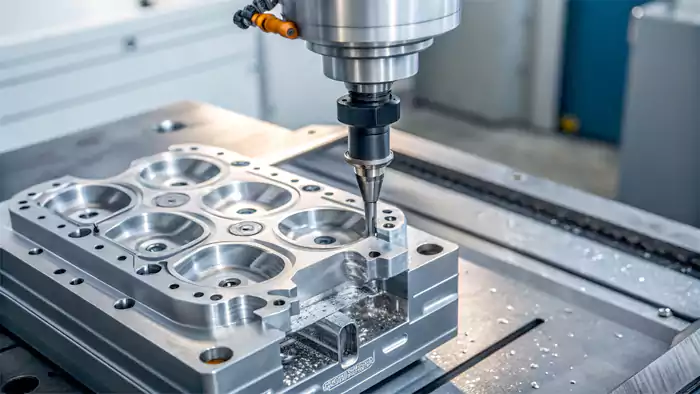Machinists often struggle with stainless steel's tough properties, leading to broken tools and scrapped parts. After 15 years in CNC machining, I've learned that success comes down to understanding the material and using the right approach.
While stainless steel is generally more difficult to machine than other metals due to its work-hardening properties and high tensile strength, proper tooling selection, cutting parameters, and cooling strategies make it entirely manageable. The key is matching the specific grade of stainless steel with optimal machining conditions.
My experience has shown that mastering stainless steel machining requires deep knowledge of the material properties and proven strategies. Let me share what I've learned about effectively working with this challenging but rewarding material.
What Are the Different Types of Stainless Steel and Their Properties?
When I first started machining stainless steel, I was confused by all the different grades. Understanding these distinctions is crucial for successful machining operations and meeting application requirements.
Stainless steel is categorized into five main types: austenitic (300 series), ferritic (400 series), martensitic (400/500 series), duplex, and precipitation-hardening. Each type has distinct properties based on their crystalline structure and alloying elements.

Common Stainless Steel Grades and Their Applications
| Grade | Type | Properties | Common Applications |
|---|---|---|---|
| 304 | Austenitic1 | Good corrosion resistance, moderate strength | Food equipment, kitchen appliances |
| 316 | Austenitic | Better corrosion resistance than 304, good for marine | Medical devices, marine equipment |
| 410 | Martensitic | High strength, moderate corrosion resistance | Knife blades, surgical tools |
| 430 | Ferritic | Good formability, moderate corrosion resistance | Automotive trim, appliances |
| 2205 | Duplex2 | High strength, excellent corrosion resistance | Chemical processing, offshore |
I've found that austenitic stainless steels like 304 and 316 are the most commonly machined grades in my shop. They offer excellent corrosion resistance but can be challenging to machine due to their work-hardening tendency. Martensitic grades like 410 are generally easier to machine but offer less corrosion resistance.
Is 304 or 316 Stainless Steel Better for Machining?
Many clients ask me this question, especially when their projects require good corrosion resistance. The choice between these popular grades can significantly impact both machining efficiency and final part performance.
While 304 and 316 are both austenitic stainless steels, 304 is generally easier to machine and more cost-effective. However, 316 offers superior corrosion resistance due to its molybdenum content, making it better for marine environments and medical applications.

From my experience machining both grades extensively, I've noticed that 304 typically allows for slightly higher cutting speeds3 and shows less tool wear4. However, when working with 316, I've found success by:
Comparing 304 and 316 Machining Parameters
| Parameter | 304 | 316 |
|---|---|---|
| Cutting Speed | 100-150 SFM | 80-120 SFM |
| Feed Rate | Moderate | Slightly lower |
| Tool Life | Better | Reduced |
| Surface Finish | Good | Excellent |
| Cost | Lower | Higher |
The key to successfully machining either grade lies in maintaining consistent cutting parameters and using appropriate cooling strategies. I've found that high-pressure coolant particularly helps with 316's tendency to form long, stringy chips.
What Are the Best Methods for Cutting Stainless Steel?
Early in my career, I learned the hard way that traditional cutting approaches often fall short when working with stainless steel. This material demands specific techniques for optimal results.
The most effective methods for cutting stainless steel include carbide tooling with appropriate coatings, rigid machine setups, and high-pressure coolant. CNC milling and turning with proper feed rates and cutting speeds typically yield the best results.

When it comes to cutting stainless steel, I've developed several tried-and-true approaches:
Effective Cutting Strategies for Stainless Steel
- Tool Selection
- Carbide tools with AlTiN or TiCN coatings5
- Sharp cutting edges to minimize work hardening
- Positive rake angles for better chip evacuation
- Cutting Parameters
- Moderate to high feed rates6
- Lower cutting speeds compared to mild steel
- Consistent depth of cut to avoid work hardening
- Cooling Strategies
- High-pressure coolant directed at the cutting edge
- Through-tool cooling when possible
- Consistent coolant concentration and pressure
Can You Successfully CNC Mill Stainless Steel?
This question often comes from those new to working with stainless steel, concerned about the material's reputation for being difficult to machine.
Yes, stainless steel can be successfully milled using CNC machines. Success depends on using rigid machine tools, appropriate cutting parameters, and proper tool selection. Modern CNC machines with high-pressure coolant systems are particularly well-suited for this task.

Based on my extensive experience with CNC milling stainless steel, here are the critical factors for success:
Best Practices for CNC Milling Stainless Steel
| Factor | Recommendation | Reason |
|---|---|---|
| Machine Rigidity | High | Reduces chatter and tool deflection |
| Tool Holders | Shrink fit or hydraulic | Provides maximum stability |
| Programming | Trochoidal paths | Maintains constant tool engagement |
| Entry Moves | Helical or ramping | Reduces impact forces |
| Monitor | Tool wear regularly | Prevents catastrophic failure |
I've found that modern CAM strategies like trochoidal milling paths significantly improve tool life and part quality when milling stainless steel. The key is maintaining consistent chip loads and avoiding any interruption in the cut that could promote work hardening.
Conclusion
Success in machining stainless steel comes down to understanding the material properties, using appropriate tools and parameters, and maintaining consistent cutting conditions. With proper preparation and execution, even the most challenging stainless steel grades can be machined effectively.
Footnotes:
-
Explore this link to understand the unique properties and diverse applications of Austenitic stainless steel, crucial for various industries. ↩
-
Discover the benefits of Duplex stainless steel, known for its high strength and excellent corrosion resistance, making it ideal for demanding environments. ↩
-
Understanding optimal cutting speeds can enhance machining efficiency and tool longevity, making it essential for any machinist. ↩
-
Minimizing tool wear is crucial for maintaining productivity and reducing costs in machining operations, making this resource invaluable. ↩
-
Explore this link to understand how these coatings enhance tool performance and longevity in stainless steel cutting. ↩
-
Learn about the impact of feed rates on efficiency and quality in stainless steel machining. ↩

I genuinely enjoy examining on this internet site, it contains fantastic content.
Hey just wanted to give you a quick heads up. The words in your article seem to be running off the screen in Firefox. I’m not sure if this is a formatting issue or something to do with web browser compatibility but I figured I’d post to let you know. The layout look great though! Hope you get the problem resolved soon. Many thanks
Downloaded the qk777gameapk today and so far, so good! Installation was a breeze, and the games are kinda addictive. Give it a shot if you’re into mobile gaming! qk777gameapk